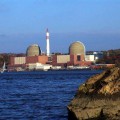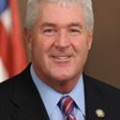 Reviewing REV: New York’s ‘Transformational’ Energy Proposal
Reviewing REV: New York’s ‘Transformational’ Energy Proposal
By Arthur “Jerry” Kremer
Reforming the Energy Vision (REV) is a New York State initiative that would create a radically different electric system and fundamentally change the way power is generated and distributed in the state. Utilities would direct the distribution of electricity produced by hundreds or thousands of smaller entities. The goal is to streamline the flow of power onto and off of the electricity grid as more electricity consumers also become producers.
As former New York Times reporter Matt Wald wrote, “New York State is proposing to turn its electric utilities into a new kind of entity that would buy electricity from hundreds or thousands of small generators and set prices for that electricity and for the costs of running the power grid.”
REV encompasses such key areas as regulatory reform; load/peak demand management; consumer management of energy use; and the development of solar and other distributed energy sources, including electricity production by customers.
Emerging Initiatives
The state Public Service Commission is currently working with investor-owned utilities in New York on “demonstration” projects that have been developed with various partners for potential statewide deployment. These and future REV projects encompass micro grids, smart grids and marketplace innovations.
REV would shift energy generation from large, sometimes distant power suppliers to micro grids located in the communities they serve. These small-scale, localized versions of the energy grid are envisioned as a way to boost reliability and energy efficiency. Smart grids technology enables utilities to adjust electricity delivery depending on consumer demand, while customers can adjust their usage in response to power availability or prices. REV also intends to make energy cleaner and more affordable by encouraging consumers to produce electricity, using options such as residential solar panels, and selling excess power to the grid.
Costs and Priorities
The exciting new possibilities that REV envisions remind us that great ideas should build upon the foundation of established infrastructure and be cost beneficial to ratepayers.
Consider micro grids, for example. Over $1 billion worth of proposals to improve and expand large areas of the state’s grid await review from the PSC. Expediting many of these projects is necessary to fortify statewide electricity distribution. By overly focusing on the development of hyper-local microsystems the statewide electric transmission network could become neglected and degraded. As such, broader transmission investments should be prioritized over local micro grids.
Reforming the Energy Vision seeks a better and brighter energy future, but the process facilitating it is under scrutiny. New York State Senator John DeFrancisco, concerned about the lack of transparency in identifying the potential added costs of REV for ratepayers, has introduced legislation that would require the fiscal analysis of proposed REV projects. This common-sense bill has already passed the New York State Senate with bipartisan support. Passing it in the Assembly should be one of the first priorities when the Legislature reconvenes.
Developing new energy marketplaces is exciting, but we must protect New York’s hard-pressed ratepayers by ensuring that only private investment will fund these projects. New York State must maintain an open and competitive marketplace with a level playing field that encourages and supports innovation while private investors bear the financial risks of their projects.
REV should also be implemented while the state reduces a very troubling energy cost for New Yorkers: the taxes and fees that make up 25 percent of a typical residential electric utility bill. REV pledges to address “rising electric bills” and avoid “uncollectable bills,” yet the state has not taken any steps to cut the excessive taxes it imposes on ratepayers, which are especially onerous for New Yorkers who live on fixed incomes or can least afford them. This should be resolved by New York State first and foremost.
In fact, REV should only move forward if cost/benefit analyses confirm that the resulting regulatory changes and new technology will reduce energy costs and cut toxic emissions. Ultimately, REV’s vision must only be achieved in an open and accountable manner, for the sake of all New Yorkers who need clean, reliable, affordable energy and a healthy environment.
Arthur “Jerry” Kremer served in the New York State Assembly from 1966 to 1988, eventually becoming chairman of the Ways & Means Committee, a position he held for ten years. He now serves as chairman of the New York Affordable Reliable Electricity Alliance (New York AREA), a diverse organization of more than 150 business, labor, and community leaders and organizations.

















Follow Us